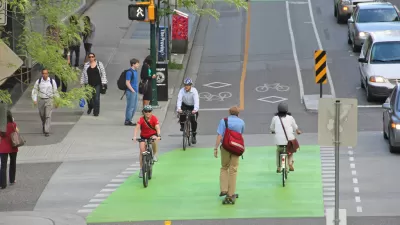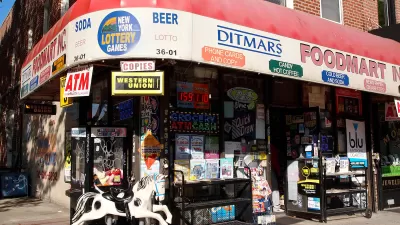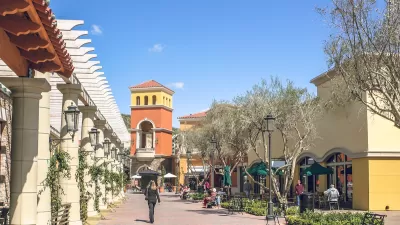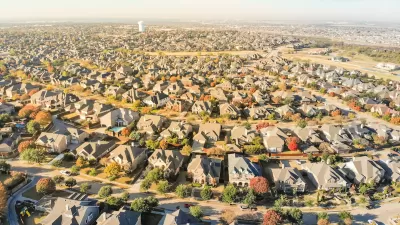A large majority of Vancouver residents can access a grocery store in 15 minutes or less by bicycle or on foot.

While the ‘15-minute city’—a neighborhood or city where residents can reach essential amenities in under 15 minutes without using a car—remains a long-term goal for many cities, in Vancouver, British Columbia, the concept is close to reality. Today, the majority of Vancouver residents can reach a grocery store within 15 minutes on bike or foot, reports Cheryl Chan for the Vancouver Sun.
According to a new study, “Nearly 80 per cent of Vancouver residents can get to a grocery store on foot or two wheels within that time frame, even assuming the slower travelling speeds of a senior.” Residents who bike are in luck: “Virtually all of the city had at least one grocery store a 15-minute bike ride away, while more than 75 per cent of the population with bikes has their pick of 10 or more grocery stores.”
For pedestrians, the numbers are still encouraging, but come with some caveats. “Among walkers, 91 per cent had access to at least one store within a 15-minute walk. That figure, however, is based on the walking speed of adults younger than 65 years old.” When calculated using a slower speed, the percentage of people that can’t reach a store within 15 minutes doubles from nine to 21 percent.
While the concept of an effective ‘15-minute city’ encompasses more than access to grocery stores, the article concludes that “Designing cities so that people can access their daily needs by foot or bike not only makes for a more inclusive city, but is also beneficial from a health and environmental perspective.”
FULL STORY: 15-minute city' within reach for Vancouver, SFU report says

Study: Maui’s Plan to Convert Vacation Rentals to Long-Term Housing Could Cause Nearly $1 Billion Economic Loss
The plan would reduce visitor accommodation by 25,% resulting in 1,900 jobs lost.

North Texas Transit Leaders Tout Benefits of TOD for Growing Region
At a summit focused on transit-oriented development, policymakers discussed how North Texas’ expanded light rail system can serve as a tool for economic growth.

Why Should We Subsidize Public Transportation?
Many public transit agencies face financial stress due to rising costs, declining fare revenue, and declining subsidies. Transit advocates must provide a strong business case for increasing public transit funding.

How to Make US Trains Faster
Changes to boarding platforms and a switch to electric trains could improve U.S. passenger rail service without the added cost of high-speed rail.

Columbia’s Revitalized ‘Loop’ Is a Hub for Local Entrepreneurs
A focus on small businesses is helping a commercial corridor in Columbia, Missouri thrive.

Invasive Insect Threatens Minnesota’s Ash Forests
The Emerald Ash Borer is a rapidly spreading invasive pest threatening Minnesota’s ash trees, and homeowners are encouraged to plant diverse replacement species, avoid moving ash firewood, and monitor for signs of infestation.
Urban Design for Planners 1: Software Tools
This six-course series explores essential urban design concepts using open source software and equips planners with the tools they need to participate fully in the urban design process.
Planning for Universal Design
Learn the tools for implementing Universal Design in planning regulations.
City of Santa Clarita
Ascent Environmental
Institute for Housing and Urban Development Studies (IHS)
City of Grandview
Harvard GSD Executive Education
Toledo-Lucas County Plan Commissions
Salt Lake City
NYU Wagner Graduate School of Public Service





























